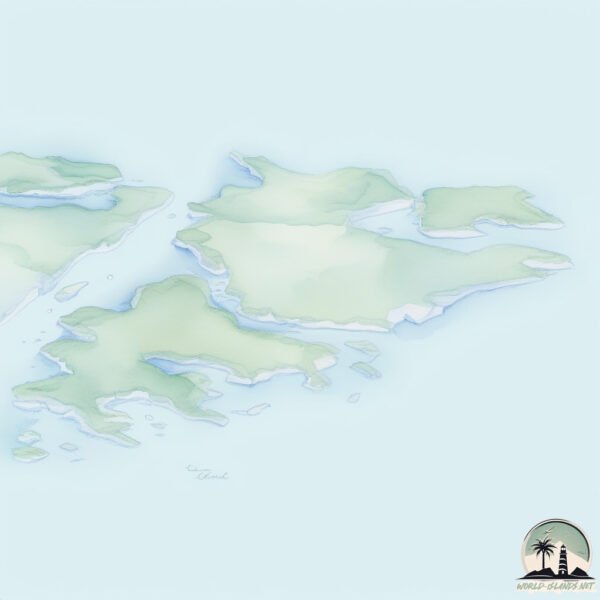Welcome to East Falkland , a Temperate island in the South Atlantic Ocean, part of the majestic Atlantic Ocean. This guide offers a comprehensive overview of what makes East Falkland unique – from its geography and climate to its population, infrastructure, and beyond. Dive into the details:
Geography and size of East Falkland
Size: 6502 km²Coastline: 2947 kmOcean: Atlantic OceanSea: South Atlantic OceanContinent: South America
East Falkland is a Very Large Island spanning 6502 km² with a coastline of 2947 km.
Archipel: Falkland Islands – Located in the South Atlantic Ocean, this British Overseas Territory is known for its rugged terrain, biodiversity, and historical significance.
Tectonic Plate: South America – A major plate covering the South American continent and part of the Atlantic Ocean, known for the Andes mountain range and significant seismic and volcanic activity.
The geographic heart of the island is pinpointed at these coordinates:
Climate and weather of East Falkland
Climate Zone: TemperateClimate Details: Subpolar Oceanic ClimateTemperature: Cold Summer
Climate Characteristics: Predominantly cold with cool summers and no dry season. Often found in coastal areas at higher latitudes or on islands.
Topography and nature of East Falkland
Timezone: UTC-04:00Timezone places: America/La_PazMax. Elevation: 644 m Mean Elevation: 65 mVegetation: Herbaceous CoverTree Coverage: 18%
The mean elevation is 65 m. The highest elevation on the island reaches approximately 644 meters above sea level. The island is characterized by Plateau: Elevated flatlands rising sharply above the surrounding area, with a maximum elevation over 500 meters but a mean elevation less than 300 meters, forming unique highland areas on islands.
Dominating Vegetation: Herbaceous Cover
Vegetation: 12 vegetation zones – Exceptionally Diverse Island
Infrastructure and Travelling to East Falkland
Does the island have a public airport? yes .
Does the island have a major port? yes .
The mean population of East Falkland is 0 per km². East Falkland is Uninhabited. The island belongs to United Kingdom .
The name of the island resonates across different cultures and languages. Here is how it is known around the world: Arabic: جزيرة فوكلاند الشرقية; German: Ostfalkland; Spanish: Isla Soledad; French: Malouine orientale; Portuguese: Malvina Oriental; Russian: Восточный Фолкленд; Chinese: 索莱达岛
Continuing your journey, Great is the next notable island, situated merely km away.
FALKLAND ISLANDS - DISCOVER ITS BEAUTY!
SafetyWing Global Travel Health Insurance | Easy Sign Up Process : ...
How British Are THE FALKLAND ISLANDS?
Places in Falkland Islands that don’t feel real
#travel #adventure #explore #nature #falklands
United Kingdom is classified as Developed region: G7: Group of Seven – Major advanced economies, including Canada, France, Germany, Italy, Japan, the United Kingdom, and the United States. The level of income is High income: OECD.
News – Latest Updates and Headlines from East Falkland
Stay informed with the most recent news and important headlines from East Falkland. Here’s a roundup of the latest developments.
Social Media Posts about East Falkland
Please note: The data used here has been primarily extracted from satellite readings. Deviations from exact values may occur, particularly regarding the height of elevations and population density. Land area and coastline measurements refer to average values at mean high tide.

